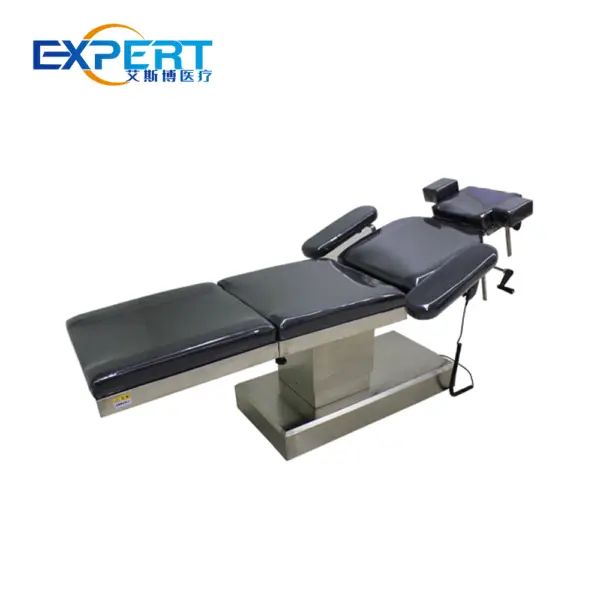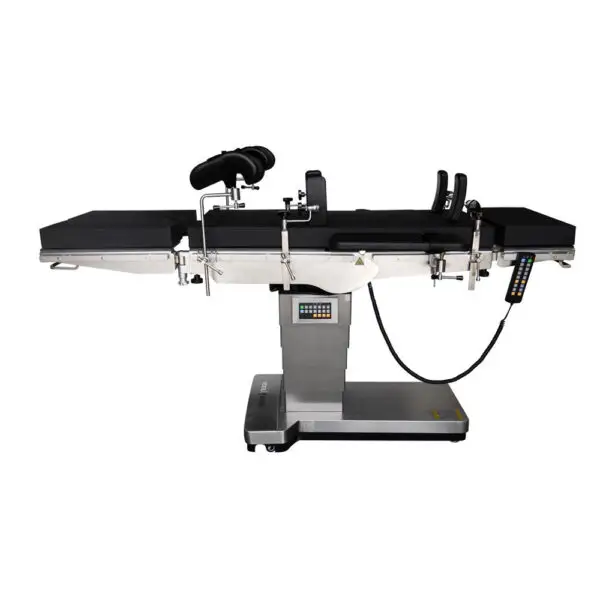Indirizzo
304 Il cardinale nord S.
Dorchester Center, MA 02124
Ore di lavoro
Dal lunedì al venerdì: 7:00 - 19:00
Fine settimana: 10:00 - 17:00
Indirizzo
304 Il cardinale nord S.
Dorchester Center, MA 02124
Ore di lavoro
Dal lunedì al venerdì: 7:00 - 19:00
Fine settimana: 10:00 - 17:00

Operating tables have long been a fundamental component of surgical procedures, providing a stable and adaptable platform for patients during operations. In recent years, advancements in medical technology have revolutionized the design and functionality of operating tables, enhancing surgical outcomes and patient safety. This blog delves into the evolving role of operating room tables in modern surgery, highlighting their key features, benefits, and future prospects.

Operating tables have long been a fundamental component of surgical procedures, providing a stable and adaptable platform for patients during operations. In recent years, advancements in medical technology have revolutionized the design and functionality of operating tables, enhancing surgical outcomes and patient safety. This blog delves into the evolving role of operating room tables in modern surgery, highlighting their key features, benefits, and future prospects.
Operating tables have undergone significant evolution since their inception in ancient times. From rudimentary wooden platforms to sophisticated, electronically controlled systems, the design and functionality of operating room tables have evolved to meet the demands of contemporary surgical practices. Modern operating room tables boast various features such as adjustable height, tilt, and lateral tilt capabilities, allowing surgeons to optimize patient positioning for different procedures.
Operating tables play a crucial role in ensuring the success of surgical interventions by providing a stable and ergonomic platform for both patients and medical personnel. Some key features and advantages of modern operating room tables include:
To illustrate the practical significance of operating tables in modern surgery, let’s explore some real-world case studies:

| Caratteristica | Basic Operating Table | Advanced Operating Table |
|---|---|---|
| Regolazione altezza | Limitato | Esteso |
| Funzionalità di inclinazione | Di base | Multi-Axis |
| Compatibilità delle immagini | None | MRI/CT Integration |
| Caratteristiche di sicurezza | Standard Side Rails | Pressure-Relieving Mattress, Straps |
| Specialty Attachments | N/A | Orthopedic Traction, Cardiovascular Positioners |
Tavoli operatori represent a cornerstone of modern surgical practice, providing essential support and functionality for a diverse range of procedures. As technology continues to advance, operating room tables will likely evolve further, incorporating innovative features to enhance surgical outcomes and patient care. By understanding the role and capabilities of operating room tables, healthcare professionals can optimize their use in various surgical settings, ultimately benefiting both patients and surgical teams.
D: Lo sono tavoli operatori compatible with all surgical procedures?
A: While operating tables are versatile and adaptable, some specialized procedures may require specific table configurations or attachments for optimal positioning and support.
Q: How often are tavoli operatori replaced or upgraded in healthcare facilities?
A: The frequency of operating table replacement or upgrade varies depending on factors such as technological advancements, budgetary considerations, and equipment maintenance. In general, healthcare facilities aim to ensure that their operating room tables remain up-to-date with current standards and capabilities.